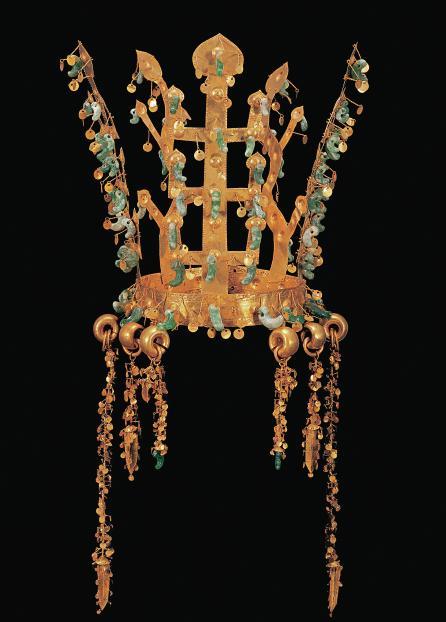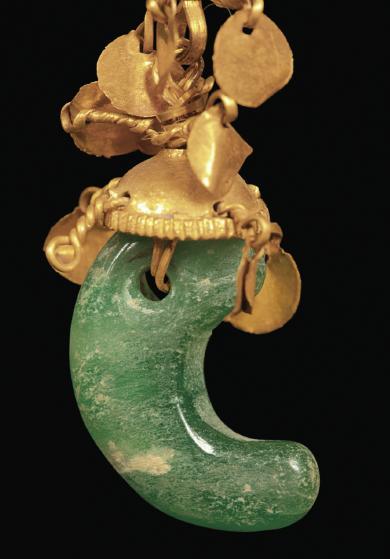Among the many kingdoms of Korea, Silla (57 BC ― 935 AD), along with its neighbor Gaya, was the one that artfully used gold for its royal crafts.
Its gold crowns, in particular, are known as some of the most spectacular national treasures uncovered in Korea.
Korea Foundation’s newly released English book, “Gold Crowns of Silla: Treasures from a Brilliant Age,” features five Silla gold crowns discovered in the tumuli of Gyeongju, North Gyeongsang Province, which served as the capital of the late Kingdom.
Its gold crowns, in particular, are known as some of the most spectacular national treasures uncovered in Korea.
Korea Foundation’s newly released English book, “Gold Crowns of Silla: Treasures from a Brilliant Age,” features five Silla gold crowns discovered in the tumuli of Gyeongju, North Gyeongsang Province, which served as the capital of the late Kingdom.

In 1921, a gold crown and a large quantity of gold objects were found at a construction site in Gyeongju.
This was the discovery of the famous Silla gold crown “Geumgwangchong,” which means “Gold Crown from Gold Crown tomb.”
The dazzling gold culture of Silla unveiled as four more gold crowns were uncovered in later years. The four crowns are: “Geumnyeongchong,””Seobongchong,” “Cheonmachong,” and “Hwangnamdaechong.”
Giving each crown a chapter, the book provides exquisite photos of the treasures, including close-up shots of their ornaments and pendants, most of them made of gold spangles and jade.

Yi Young-hoon, director of Gyeongju National Museum of Korea, wrote a special introduction for the book. He emphasizes that the gold crowns of Silla are unique in their own designs.
“The spangles and the curved jade symbolize the leaves and fruits of the tree of life,” he wrote.
The book is written by scholar Lee Han-sang of Daejeon University and translated by Lee Jung-hee of Portland State University in the United States.
The book is mostly visual-oriented with few words, to make it easier for foreign readers to familiarize themselves with the crowns.
But it also offers three scholarly articles, one of them written by Lee Han-sang, the book’s author.
In his article, “The Gold culture and the Gold Crowns of Silla,” Lee discusses the lineages and symbolism of the royal crowns.
“The Development of the Maripgan Period and the Gold Crowns of Silla” by Ju Bu-don, professor at Kyungpook National University, explores the period of Maripgan ― the 17th ruler of Silla ― when gold crowns were highly popular.
Sarah Milledge Nelson, professor at Denver University in U.S., offers the historical background of Silla’s exceptional gold culture in her article “Origin, Characteristics and Significance of Silla Gold Crowns.”
The Silla crowns weigh more than one kilogram. It is unlikely that the Silla Kings wore them on a daily basis, but only on formal and ceremonial occasions.
The newly released book will be distributed to various libraries and institutions overseas.
By Claire Lee (clairelee@heraldcorp.com)







![[KH Explains] How should Korea adjust its trade defenses against Chinese EVs?](http://res.heraldm.com/phpwas/restmb_idxmake.php?idx=644&simg=/content/image/2024/04/15/20240415050562_0.jpg&u=20240415144419)










![[Today’s K-pop] Stray Kids to return soon: report](http://res.heraldm.com/phpwas/restmb_idxmake.php?idx=642&simg=/content/image/2024/04/16/20240416050713_0.jpg&u=)